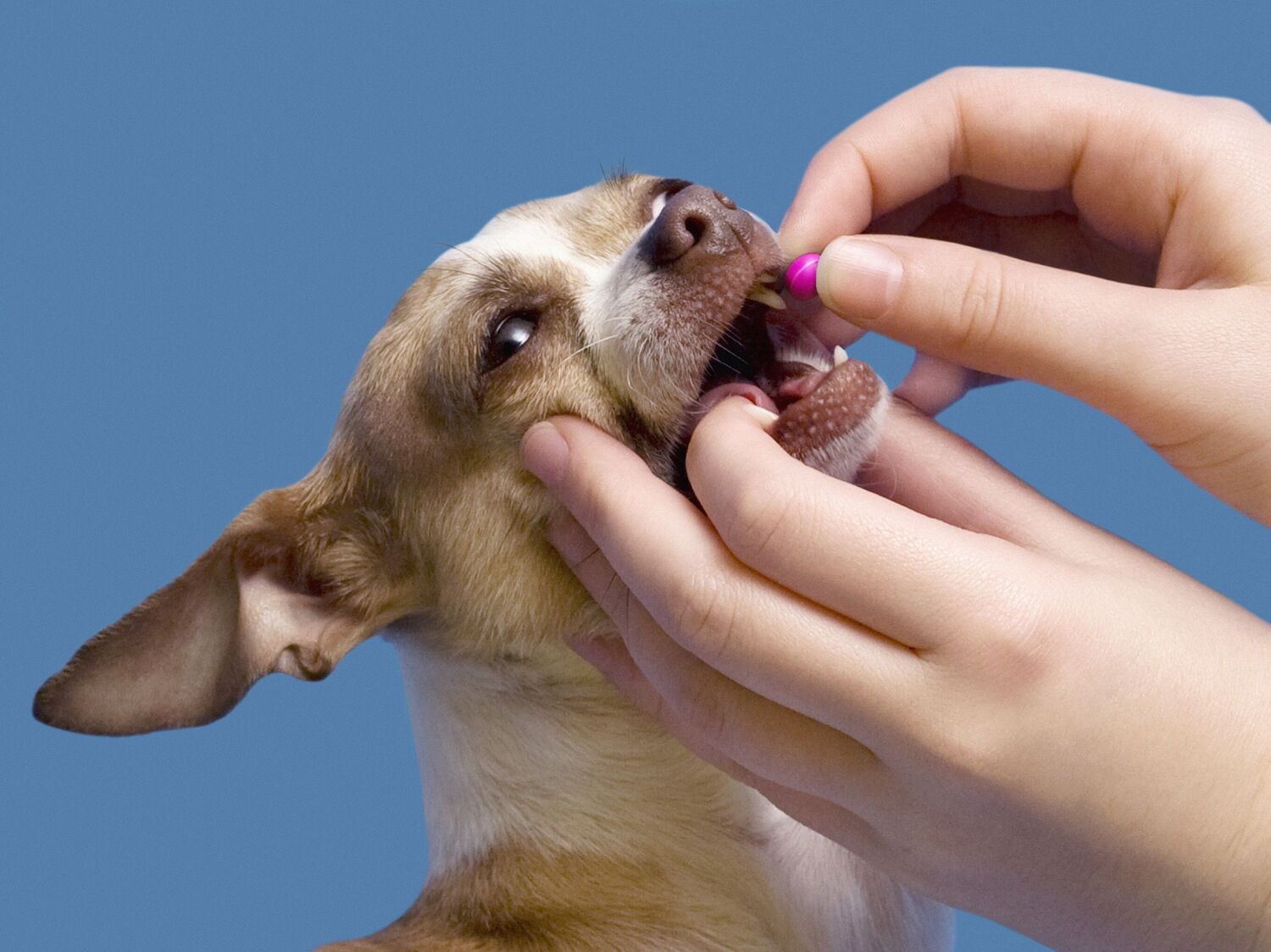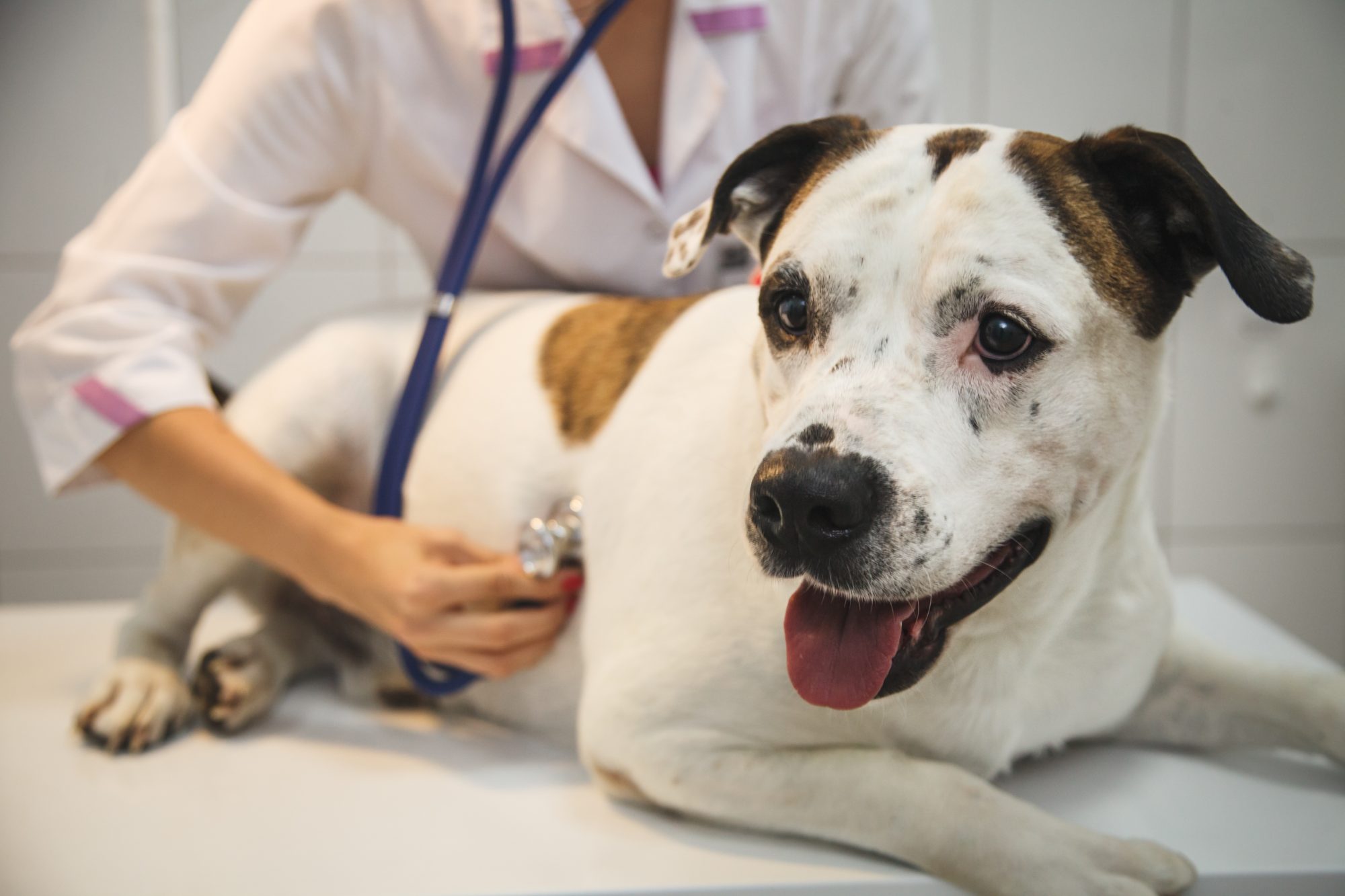Home>Health & Wellness>Common Health Issues>Heart Health>How Is Heartworm In Dogs Spread


Heart Health
How Is Heartworm In Dogs Spread
Published: February 7, 2024
Learn how heartworm in dogs is spread and how to protect your pet's heart health. Understand the risks and prevention methods for heartworm disease.
(Many of the links in this article redirect to a specific reviewed product. Your purchase of these products through affiliate links helps to generate commission for Pawsomeoldies.com, at no extra cost. Learn more)
Table of Contents
Introduction
Heartworm disease is a serious and potentially fatal condition that can affect our beloved canine companions. Understanding the causes, transmission, prevention, and treatment of heartworm in dogs is crucial for ensuring the well-being of our furry friends. This comprehensive guide aims to shed light on the various aspects of heartworm disease, equipping dog owners with the knowledge needed to protect their pets from this insidious threat.
As we delve into the intricacies of heartworm disease, it becomes evident that prevention is paramount. By gaining a deeper understanding of how heartworm is transmitted and the measures that can be taken to safeguard our canine companions, we can proactively mitigate the risks associated with this debilitating illness. Additionally, familiarizing ourselves with the available treatment options empowers us to make informed decisions in the event that our furry friends are diagnosed with heartworm disease.
The journey to comprehensively comprehend heartworm disease in dogs begins with unraveling the complexities of its transmission, delving into the significance of prevention, and exploring the available treatment modalities. By embarking on this educational expedition, we equip ourselves with the knowledge and tools necessary to protect our canine companions from the perils of heartworm disease.
Read more: How To Prevent Heartworm In Dogs
Understanding Heartworm Disease
Heartworm disease is a potentially life-threatening condition that primarily affects dogs but can also occur in other mammal species, including cats and, in rare cases, humans. This disease is caused by a parasitic worm known as Dirofilaria immitis, which is transmitted through the bite of an infected mosquito. Once inside a dog's body, these worms mature and reproduce, leading to severe damage to the heart, lungs, and blood vessels.
The lifecycle of heartworms begins when an infected mosquito bites a dog, injecting microscopic heartworm larvae into the animal's bloodstream. Over the course of several months, these larvae develop into mature worms, primarily residing in the heart and pulmonary arteries. As the infestation progresses, the worms can cause inflammation, blockages, and irreversible damage to these vital organs, ultimately compromising the dog's cardiovascular and respiratory systems.
Symptoms of heartworm disease may not be immediately apparent, especially in the early stages. However, as the infestation advances, affected dogs may exhibit signs such as coughing, lethargy, exercise intolerance, and difficulty breathing. In severe cases, heartworm disease can lead to heart failure, organ damage, and even death.
Understanding the insidious nature of heartworm disease underscores the importance of preventive measures and regular screenings for our canine companions. By implementing preventative medications, such as monthly heartworm preventives, dog owners can significantly reduce the risk of their pets contracting this debilitating illness. Furthermore, routine veterinary check-ups and heartworm tests enable early detection and prompt intervention, enhancing the chances of successful treatment and recovery.
In essence, comprehending the complexities of heartworm disease empowers dog owners to take proactive steps in safeguarding their pets' well-being. By staying informed about the risks, symptoms, and preventive strategies associated with heartworm disease, we can create a safer and healthier environment for our beloved canine companions.
Transmission of Heartworm in Dogs
Heartworm disease is primarily transmitted through the bite of an infected mosquito. When a mosquito carrying heartworm larvae bites a dog, it deposits these microscopic larvae into the animal's bloodstream. Once inside the dog's body, these larvae undergo a complex maturation process, eventually developing into adult worms that primarily reside in the heart and pulmonary arteries.
The transmission of heartworm in dogs is intricately linked to the life cycle of the parasitic worm, Dirofilaria immitis. The process begins when a mosquito ingests the blood of an infected animal, such as a dog, containing microfilariae – the immature form of heartworms. Within the mosquito, these microfilariae undergo further development, eventually reaching the infective larval stage. When the infected mosquito subsequently bites another animal, such as a dog, it transmits these infective larvae into the new host's bloodstream, perpetuating the cycle of heartworm transmission.
It's important to note that heartworm disease is not directly contagious between dogs. Instead, it relies on the intermediary role of mosquitoes in transmitting the infective larvae from one host to another. This means that dogs cannot transmit heartworms to each other through casual contact or social interaction.
The geographical distribution of heartworm disease is closely tied to the prevalence of infected mosquitoes in a given area. Warmer climates and regions with high mosquito populations are particularly conducive to the transmission of heartworm in dogs. However, it's essential to recognize that heartworm disease can occur in any location where infected mosquitoes are present, making it a potential threat to dogs in various environments.
Understanding the transmission of heartworm in dogs underscores the significance of preventive measures. By minimizing exposure to mosquitoes and implementing regular heartworm preventives, dog owners can significantly reduce the risk of their pets contracting this debilitating illness. Additionally, environmental control measures, such as reducing mosquito breeding sites and using insect repellents, can further contribute to mitigating the transmission of heartworm in dogs.
In essence, comprehending the intricate process of heartworm transmission empowers dog owners to take proactive steps in protecting their pets from this insidious disease. By staying informed about the transmission mechanisms and implementing preventive strategies, we can create a safer and healthier environment for our beloved canine companions.
Prevention of Heartworm in Dogs
Preventing heartworm disease in dogs is paramount for ensuring the well-being of our beloved pets. Fortunately, there are several effective measures that dog owners can take to safeguard their furry companions from this potentially life-threatening illness.
1. Monthly Heartworm Preventives
Administering monthly heartworm preventives is a cornerstone of heartworm disease prevention. These medications, available in various forms such as chewable tablets, topical solutions, and injectables, work to eliminate any immature heartworm larvae that may have been transmitted to the dog in the preceding month. By consistently providing these preventives, dog owners can significantly reduce the risk of heartworm infestation and protect their pets from the detrimental effects of the disease.
2. Regular Veterinary Check-ups
Routine veterinary check-ups are essential for monitoring the overall health of dogs and detecting any potential signs of heartworm disease at an early stage. During these visits, veterinarians can conduct heartworm tests to identify the presence of the disease and recommend appropriate treatment if necessary. Additionally, these check-ups offer opportunities for discussing preventive measures and ensuring that dogs receive the necessary vaccinations and medications to maintain their well-being.
3. Environmental Control
Implementing environmental control measures can contribute to reducing the risk of heartworm transmission. This includes minimizing exposure to mosquitoes by keeping dogs indoors during peak mosquito activity, using mosquito repellents, and eliminating potential breeding sites for mosquitoes around the home. By creating a less hospitable environment for mosquitoes, dog owners can help mitigate the likelihood of heartworm transmission to their pets.
4. Year-Round Prevention
Consistency is key when it comes to heartworm prevention. It's important for dog owners to adhere to year-round preventive measures, regardless of the season or local climate. Even in regions with colder temperatures, where mosquito activity may decrease during certain months, maintaining a year-round preventive regimen ensures continuous protection against heartworm disease.
5. Education and Awareness
Educating oneself about heartworm disease and staying informed about preventive strategies is crucial for effective prevention. By understanding the transmission mechanisms and risk factors associated with heartworm disease, dog owners can make informed decisions regarding their pets' health. Additionally, raising awareness among fellow dog owners and the community can help promote a collective effort to combat heartworm disease and protect canine companions.
In essence, the prevention of heartworm in dogs encompasses a multi-faceted approach, combining preventive medications, regular veterinary care, environmental management, year-round vigilance, and informed decision-making. By diligently implementing these preventive measures, dog owners can significantly reduce the risk of heartworm disease and provide their furry friends with a healthier and happier life.
Read more: How Does A Heartworm Affect Dogs
Treatment of Heartworm in Dogs
Treating heartworm disease in dogs is a complex and challenging process that requires careful management and veterinary expertise. The goal of treatment is to eliminate the adult heartworms, mitigate the associated complications, and facilitate the dog's recovery to the best possible extent.
1. Stabilization
Before initiating treatment for heartworm disease, it is crucial to stabilize the affected dog's condition. This may involve addressing any concurrent health issues, such as heart or lung complications, and ensuring that the dog is in an optimal state to undergo treatment.
2. Immiticide Treatment
The primary medication used to eliminate adult heartworms in dogs is melarsomine dihydrochloride, commonly known by the brand name Immiticide. This medication is administered through a series of injections, targeting the adult heartworms residing in the dog's heart and pulmonary arteries. The treatment protocol typically involves a series of injections over several months, with careful monitoring of the dog's response to the medication.
3. Exercise Restriction
During the treatment and recovery period, it is essential to restrict the dog's physical activity to prevent complications associated with the breakdown of the heartworms. Vigorous exercise can lead to the dislodgment of worm fragments, causing potentially life-threatening complications. Therefore, strict confinement and limited activity are crucial components of the treatment regimen.
Read more: How Important Are Heartworm Meds For Dogs
4. Post-Treatment Care
Following the administration of Immiticide and the elimination of adult heartworms, dogs require diligent post-treatment care. This may involve additional medications to manage inflammation, prevent secondary infections, and support the dog's cardiovascular and respiratory systems during the recovery phase. Regular veterinary check-ups and diagnostic tests are essential to monitor the dog's progress and ensure a successful recovery.
5. Potential Complications
In some cases, the presence of a large number of adult heartworms or advanced disease may lead to complications during treatment. These complications can include pulmonary thromboembolism, anaphylactic reactions to the medication, and other cardiovascular or respiratory issues. Veterinary intervention and supportive care are crucial in managing these complications and optimizing the dog's chances of recovery.
6. Long-Term Management
After undergoing treatment for heartworm disease, dogs require long-term management to address any residual effects and prevent reinfestation. This may involve continued administration of heartworm preventives, regular veterinary check-ups, and ongoing monitoring of the dog's cardiovascular and respiratory health. Long-term management aims to ensure that the dog remains free from heartworm disease and maintains a good quality of life.
In essence, the treatment of heartworm in dogs necessitates a comprehensive and meticulous approach, encompassing medication administration, exercise restriction, post-treatment care, management of potential complications, and long-term vigilance. By navigating the complexities of heartworm treatment with diligence and veterinary guidance, dog owners can optimize their pets' chances of overcoming this challenging disease and enjoying a healthy, heartworm-free life.
Conclusion
In conclusion, the multifaceted nature of heartworm disease in dogs underscores the critical importance of proactive measures to safeguard our beloved pets from this insidious threat. Understanding the complexities of heartworm disease, including its transmission, prevention, and treatment, empowers dog owners to make informed decisions and take decisive action in protecting their canine companions.
The transmission of heartworm in dogs primarily occurs through the bite of infected mosquitoes, highlighting the pivotal role of environmental control and preventive medications in mitigating the risk of infestation. By minimizing exposure to mosquitoes and implementing year-round heartworm preventives, dog owners can significantly reduce the likelihood of their pets contracting this debilitating illness.
Prevention lies at the forefront of combating heartworm disease, with monthly heartworm preventives, regular veterinary check-ups, environmental management, and year-round vigilance serving as essential pillars of defense. By diligently adhering to these preventive measures, dog owners can create a safer and healthier environment for their furry friends, reducing the risk of heartworm infestation and its associated complications.
In the event that a dog is diagnosed with heartworm disease, navigating the treatment process with veterinary guidance and expertise is paramount. From stabilization and Immiticide treatment to post-treatment care and long-term management, the journey to overcoming heartworm disease requires careful management, diligent monitoring, and unwavering dedication to the well-being of the affected dog.
By embracing a holistic approach to heartworm disease, encompassing education, prevention, and treatment, dog owners can play a pivotal role in safeguarding their pets from this potentially life-threatening condition. Through ongoing awareness, proactive measures, and a commitment to the health and happiness of our canine companions, we can strive to create a world where heartworm disease is a rare occurrence, and dogs can thrive free from this pervasive threat.
In essence, the journey to comprehensively comprehend heartworm disease in dogs equips us with the knowledge and tools necessary to protect our furry friends from the perils of this debilitating illness. By staying informed, proactive, and compassionate, we can create a safer and healthier environment for our beloved canine companions, ensuring that they can lead vibrant and heartworm-free lives.












